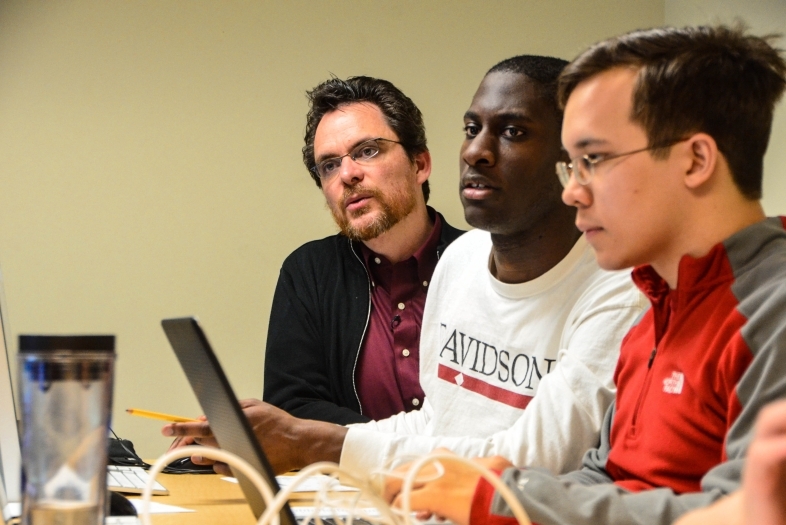
Research
Student Research in Mathematics and Computer Science
One of the hallmarks of Davidson College is the opportunity for students to work on significant projects as undergraduates.
Many students are involved in research work at Davidson beyond the scope of usual coursework, through summer research projects, research with faculty, independent studies, honors projects, and more, thanks in part to external faculty grants, as well as internal collaborative grants to faculty or students, such as the Davidson Research Initiative, the Faculty Study and Research (FS&R) fund, the Research in Science Experience (RISE) program, and the R. Craig and Sheila Yoder Applied Research Fellowship
Students pursue research in computer science, data analytics, and theoretical and applied mathematics, investigating areas such as graph theory, game theory, sports analytics, combinatorics, distributed systems, virtual reality, machine learning, and bioinformatics.
Research, teaching, and internships beyond Davidson are available on a list of summer opportunities in mathematics and computer science.
Numerous post-graduate fellowship and scholarship opportunities are also available to math and computer science students.
Fellowships are competitive awards and programs that provide funding and other resources for meaningful immersive work, like research, teaching, or service. Like scholarships, fellowships can also support academic study.
These featured fellowships support a variety of experiences in and outside of the U.S. Interested candidates should contact Davidson’s Office of Fellowships to learn more about these fellowships and other programs.